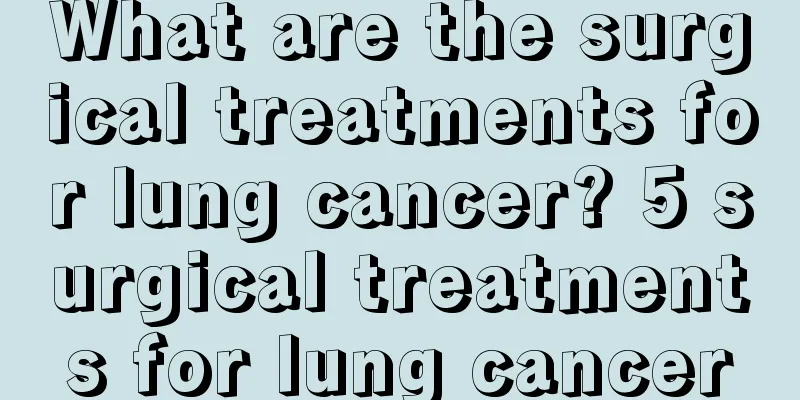What are the surgical treatments for lung cancer? 5 surgical treatments for lung cancer

|
For many malignant tumors, patients will choose surgical treatment to remove most of the cancer cells. This is also true for lung cancer patients. Because the lungs are invaded by cancer cells, only by choosing the appropriate treatment method can the health of the body be guaranteed. ① For peripheral lung cancer (including small cell lung cancer that was not diagnosed before surgery), surgery is performed first, and chemotherapy or radiotherapy is given later according to the results of pathological examination. ② For lung cancer with metastasis to local lymph nodes but no clear distant metastasis, preoperative chemotherapy or radiotherapy is given to strive for smooth surgery and maximum retention of healthy lung tissue, and then appropriate chemotherapy or radiotherapy is given. ③ For lung cancer with no distant metastasis but estimated to be difficult for radical surgery, preoperative chemotherapy or radiotherapy is given to strive for smooth radical surgery or intraoperative radiotherapy, and chemotherapy or radiotherapy is given after surgery according to the results of pathological examination. ④ For those who cannot undergo surgical treatment in the later stage, radiotherapy is usually performed first and then chemotherapy, or chemotherapy and radiotherapy are performed at the same time to play a synergistic role, but chemotherapy and radiotherapy have greater side effects at the same time, and Chinese medicine should be used at the same time to reduce toxic side effects and improve efficacy, and immunotherapy can be appropriately added to promote recovery. ⑤ Combine biological therapy with other treatments. Biological therapy is a relatively new therapy that has emerged in the past 10 years. For example, colony stimulating factor can appropriately increase the chemotherapy dose to improve the efficacy. Daily intrapleural injection of small doses of interleukin-2 is conducive to the conversion of cancer cells in postoperative cancerous pleural effusion to negative. For many patients with early lung cancer, the success rate of surgical removal of cancer cells is very high, but as the disease continues to worsen until the late stage of lung cancer, the success rate is also decreasing with the further expansion of cancer cells. Therefore, it is still hoped that patients can be treated in the early stages of the disease. |
<<: What are the early symptoms of lung cancer? 4 early symptoms of lung cancer
>>: What is the most common cause of lung cancer? Five high-risk factors for lung cancer
Recommend
How to break stones
Stones are a very common disease in daily life. T...
Is it okay to wash the vulva with cold water?
The environment inside the vagina is very importa...
How long can you live after surgery for advanced colorectal cancer
How long can patients with advanced colorectal ca...
After an enhanced CT scan, I found shadows in my lungs. Is this early stage lung cancer?
A shadow in the lungs found during enhanced CT sc...
My right kidney hurts when I bend over
You need to do housework at home on weekends and ...
Can color Doppler ultrasound detect bone cancer?
Can color Doppler ultrasound detect bone cancer? ...
What to do if the beard mark is too deep
It is normal for men to have beards, and whether ...
Things to note before checking sex hormones
Human sex hormones refer to a type of hormone syn...
Can lymphoma be cured? What is the cause?
Can lymphoma be cured? What causes it? 1. This ha...
What medicine can relieve rhinitis bleeding
Rhinitis is an inflammatory disease of the nasal ...
What are the topical bone cancer painkillers?
Drugs for treating bone cancer are a major part o...
Yichang's famous specialties
It would be a pity to travel to a place just to e...
Where should I scrape when I feel stomach discomfort
Nine out of ten people have stomach problems. Mos...
Anti-dandruff shampoo can only be used a few times a week
There are many factors that cause dandruff. There...
What to do if you have less hair and poor hair quality
Some people have very good hair, and any hairstyl...









